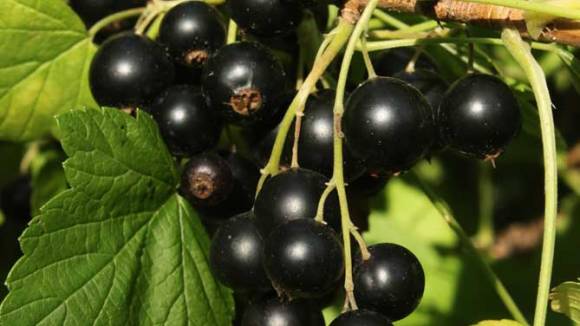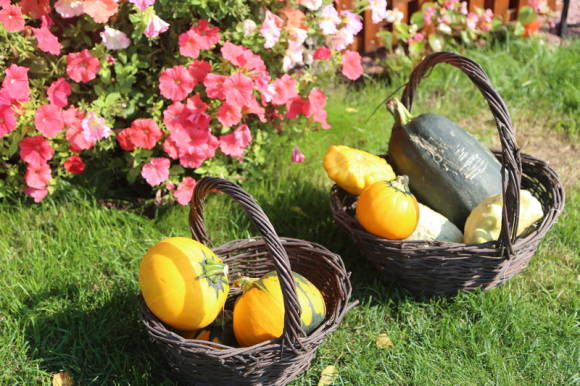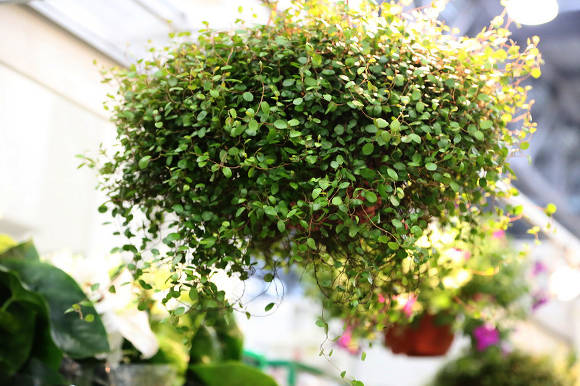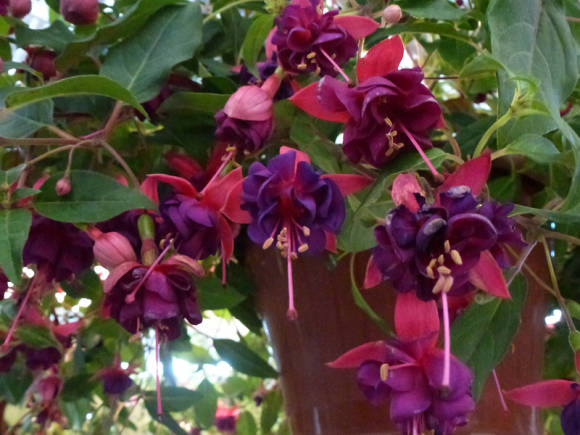|
We are accustomed to the fact that behind the words "aquatic plant" there is certainly a perennial, which is either something inconspicuous-creeping, like pondweed and elodea, or a massive creature like water lilies, irises and reeds. However, there are also completely different aquatic plants - large annuals. They develop rapidly and die just as quickly, managing to increase a large biomass in one season. Their existence is inextricably linked with very specific water bodies - well-warmed low-flow lakes with an abundance of nutrients both in the water and in the ground. Such lakes and such plants are distributed mainly in the tropics and subtropics, but among the large aquatic annuals there are two species that move quite far to the north. It is water nut and euryale.

Water nut, or chilim (Trapa natans) is a rosette of leaves with swollen petioles, crowning a long underwater stem. The stem also has what at first can be mistaken for roots - branched outgrowths that absorb nutrients from the water. However, these are not roots, but underwater leaves. The stem also departs not from the root or rhizome at all (yes, this plant has no roots at all!), But from a large horned seed. It is into these, reaching 4–5 cm in diameter, four-horned fruits that turn inconspicuous whitish flowers, appearing in abundance among the leaves of the floating rosette. Why are they called "nuts"? The fact is that large seeds, enclosed within a hard spiky shell, are quite edible and really taste like unripe, sweetish hazel nuts.
In Eurasia, chilim is distributed from the Danube basin to the Kaliningrad region, in the forest-steppe regions of the European part of Russia, in northern Kazakhstan, in the south of Western Siberia. The mountains of Central Asia are insurmountable for him, but in the Amur basin there is the largest fragment of the area on the territory of our country. In fact, this fragment is only the northern part of a much more extensive area, covering the east of China, Southeast Asia and even India. Waternuts also live in the waters of East Africa. It is there, in the south, that the true meaning of the specific fruits of this plant becomes obvious. After all, the local reservoirs exist only in the wet season, and then dry up. The fruits remaining in this place must resist both drought, and the many who want to feast on their contents. No wonder their shell is so hard. In order to more reliably preserve their habitat, water nuts are tricked - every spring (or, as in the tropics, every wet season) not all seeds germinate, but only a part of them. And if suddenly the plants in this season are unable to give seeds, the population will still not disappear - the next year others will sprout.
To the north, the water walnut got into one of the warm and humid eras, and so it remained here, having adapted to frost instead of drought. True, the seeds of northern nuts do not tolerate a lack of moisture at all, therefore, they can be stored and transported only in water or in wet moss.
There is this plant and not far from Moscow - in the east of the region, water nuts live in the oxbows of the Oka and Klyazma. They are less common in the Smolensk and Kaluga regions.
Soviet botanist Vasiliev in the fifties and sixties described about thirty species of water walnut on the territory of the USSR, but most of them, of course, are just geographically isolated races of the same species (Trapa natans). However, in the Far East, especially in the lakes in the south of Primorye, one can find very different populations. Probably, some of them are worthy of the status of separate species. Such are, for example, Maksimovich's water nut(Trapa maximowiczii) with small (10-15 cm) rosettes of leaves and tiny, about 1 cm, hornless fruits or large Siberian water nut(Trapa sibirica) with fruits reaching a span of "horns" of as much as 6 cm. It is interesting that 3-4 such varieties can live in the same lake, while their characters do not mix in the offspring.
The process of spreading the fruit of the water nut from the reservoir to the reservoir is interesting. Ripe fruits are almost unable to be carried by water - they are too heavy and instantly sink. You cannot rely on being swallowed by birds or fish - the fruits are too large. Instead, the various races of chilim have special bristles and notches on the “horns”, which are very conducive to the fruit's attachment ... to the wool. Indeed, the main distributors of water nuts are large ungulates that enter the water for watering or just to “take a bath”. However, both in the steppe and forest zones of Eurasia, the number of ungulates during the time of human domination has dramatically decreased, which was one of the reasons for the reduction in the range of water nuts. Meanwhile, at the end of the 19th century in the Ryazan region, the fruits of chilim were an important source of income for the Prioksky villages. They were eaten raw, added to flour and transported to fairs by carts. And in southern Siberia, they often completely replaced grain in flour.

It is not surprising that as a result, the area of the water walnut was greatly reduced by the middle of the 20th century, and within European Russia it remained only in a small number of floodplain lakes. On the territory of warmer Ukraine and Southeastern Europe, chilim is found somewhat more often, especially in the vast deltas of the Danube, Dnieper and Dniester. However, throughout Europe, the range of water nuts is decreasing; this species is also included in the Red Book of Russia.
But in our time, not always willingly, man helped this relict species. The fact is that the conditions in the waters of North America, which are warmer compared to Europe, are ideal for chilim. As a result, waternuts, accidentally introduced to the North American continent, have spread to many rivers and lakes in the eastern part of the continent. It can be considered that in this case people "restored historical justice" - after all, until the last glaciation, a species of water nut, related to the Eurasian, lived in America, but later completely died out. And in Australia, waternuts have become a real scourge of a few fresh water bodies - in hot climates, in the complete absence of herbivorous fish, they grow so quickly that they fill the entire water surface. They are not afraid even of the drought common for this continent - after all, the fruits are adapted precisely to such climate fluctuations.
In Russia, thermal power plants with cooling ponds have become an unexpected help for chilim. So, the northernmost population of water walnut, living in the southeast of the Tver region, owes its existence to the Konakovskaya GRES.
 Another, much less famous, but more than memorable aquatic annual is euryala(Euriale ferox). This is the name of a rather large plant that lives in the shallow lakes of eastern Asia - from India and Sri Lanka almost to Khabarovsk. Euryale is a relative of water lilies, and her leaves are also "water lilies" - large and flat, floating on the surface of the water. They resemble the leaves of the legendary South American victorias. (Victoria) - both are large, embossed, with protruding veins. In euriala, they, of course, are not able to withstand the weight of a child, as in Victoria, but still they can reach no less than 1 m in diameter. The leaves have a beautiful reddish-green color, they are deep crimson below. It is the leaves that make up the main charm of this plant, and not the flowers at all. Although those of the euriala are not devoid of grace - they are light purple, almost azure. But their size is not such as to attract attention from afar - they reach only 3-4 cm in diameter, and they open for just a couple of days each. But even this is a rather memorable sight.In good conditions (that is, in warm water and in the sun), five to seven flowers and about a dozen leaves can develop at the same time.
Another, much less famous, but more than memorable aquatic annual is euryala(Euriale ferox). This is the name of a rather large plant that lives in the shallow lakes of eastern Asia - from India and Sri Lanka almost to Khabarovsk. Euryale is a relative of water lilies, and her leaves are also "water lilies" - large and flat, floating on the surface of the water. They resemble the leaves of the legendary South American victorias. (Victoria) - both are large, embossed, with protruding veins. In euriala, they, of course, are not able to withstand the weight of a child, as in Victoria, but still they can reach no less than 1 m in diameter. The leaves have a beautiful reddish-green color, they are deep crimson below. It is the leaves that make up the main charm of this plant, and not the flowers at all. Although those of the euriala are not devoid of grace - they are light purple, almost azure. But their size is not such as to attract attention from afar - they reach only 3-4 cm in diameter, and they open for just a couple of days each. But even this is a rather memorable sight.In good conditions (that is, in warm water and in the sun), five to seven flowers and about a dozen leaves can develop at the same time.
Note that the name of this plant goes back to Greek mythology. That was the name of the middle of the Gorgon sisters (the youngest, we recall, was called Medusa and it was she who was defeated by Theseus). Like her sisters, Euryale could turn her gaze to stone, she had a terrible appearance, but on top of that, she was also immortal. In a way, both of the latter qualities are inherent in its plant namesake.
1. Horror.
A careless Indian bather should be very vigilant near the leaves of the euriala - they are studded with long (up to 2.5 cm) thorns. The needles are extremely sharp, serrated, quite strong and can also break off at the base. The unfolding leaf bristles like a hedgehog rolled into a ball, and near the buds the thorns grow in all directions at once, guaranteeing big trouble for small herbivores. It is for protection from lovers to feast on delicate foliage that such a weapon is acquired. It, however, is not only in Euryals. Their famous American relatives - Victoria amazonica - went even further and grew ten-centimeter needles on two-meter leaves. They can be understood - the number of species of herbivorous fish in the waters of South America is greater than on the other continents combined. It is fish with shellfish that pose the main threat to these plants. After all, there are usually a great many continuously eating mollusks in reservoirs, and therefore even in "peaceful" lotuses, the stems and petioles of leaves are studded with small sharp tubercles. However, in all these plants, the very first leaves emerging from seeds are devoid of "weapons" and can be instantly eaten by snails. This also applies to water nuts, so that an indispensable condition for their prosperous existence is the absence in the reservoir of at least such large mollusks as coils and pond snails.
2. Immortality.
Of course, euriala can be considered an annual. But, like water nuts, this "one-year old" is a forced one. It is caused either by a drought in the tropics, or by cold weather in the Amur region. And in the absence of these insurmountable circumstances, large aquatic annuals are able to exist for quite a long time.
However, euryals guarantee themselves the continuation of the genus by an extraordinary acceleration of the life cycle. At a normal temperature for them (generally speaking, more than 30 ° C, but for the tropics this is the normal temperature of shallow water bodies), the first bud appears after the unfolding of the fourth or fifth leaf - less than a month after seed germination. The first fruits ripen within a month and a half, so that euryala can grow even in temporary reservoirs. In the north, of course, development is delayed, but even there, in the floodplain lakes of the Amur and Bikin rivers, euriala blooms continuously all summer and manages to produce several tens, or even hundreds of seeds. And in terms of resistance to external influences, euryale seeds are approaching the legendary ten thousand-year record of the lotus. They are also capable of lying in swamp mud for many years, waiting for an opportune moment. And, like chilim, only a fraction of the seeds germinate each year.
But our thorny blue water lily does not know how to look at the stone, although this could probably help her - after all, due to the pollution of water bodies and the reduction in the number of shallow lakes, this plant is also listed in the Red Book of Russia.
If we talk about the agricultural technology of these relatively exotic plants, then we must immediately emphasize that they can grow only in large and at the same time shallow ponds that are constantly in the sun. A small flow will not hurt - it is only important that the inflowing water does not cool the reservoir.
The presence of a fairly significant amount of silt is also important.When planting plants, in no case should it be replaced with garden soil - after it is immersed in a reservoir, all soil terrestrial microfauna perishes, and all the oxygen is spent on decomposition of the remains. However, in the soil, which has been under water for about a month, an “underwater” balance has already been established and it can be used.
Sowing is best done in small pots filled with silt and placed at a depth of 10-15 cm - in the area where the water warms up best. Seeds of both water walnuts and euriala germinate at a water temperature of about 25–30 ° С. The same temperature is most favorable for their development. When floating leaves appear, it's time to transfer grown specimens to a greater depth - about a meter. Due to the fact that water nuts do not have roots, they can be safely moved from place to place, simply by tying them to a pebble - "anchor", but you cannot transplant euriala with its numerous thin roots - you just need to transfer a young plant from a pot to a flat a box filled with the same silt.
If the summer turns out to be warm, the development of plants will be rapid, but in cool weather they will “freeze” and stop growing. Probably, you can try to make a greenhouse out of the pond to improve conditions, but this is quite difficult.
Be that as it may, in a suitable reservoir and water nut, and euriala will have time to bloom and give seeds.
It should not be forgotten that, in addition to snails, filamentous algae ("mud"), which can cover the surface of the reservoir and are the first to capture nutrients from the water, pose a serious danger to them. In addition, little light enters through their layer and the pond does not warm up well. That is why, by the way, you should not allow the leaves of water lilies or aquatic annuals grown in a pond to cover more than a third of its surface. Better, of course, to immediately make a large pond than to shred the leaves of your favorites.
Aphids can cause great harm to all plants with floating leaves. Strange as it may seem at first glance, these land insects thrive on such peculiar rafts - after all, there are no natural enemies here. They are able to "suck" even a water lily or egg capsule, not to mention more delicate plants. However, remember that using pesticides in a garden pond is very dangerous, so the only way to control parasites should be your vigilance - the very first aphids that appear on the leaves of pond plants (usually black reed aphids live there) must be immediately destroyed.
We hope we have piqued your interest in these unusual plants. If so, there is no doubt that by cultivating them you will contribute to the conservation of these wonderful species.










